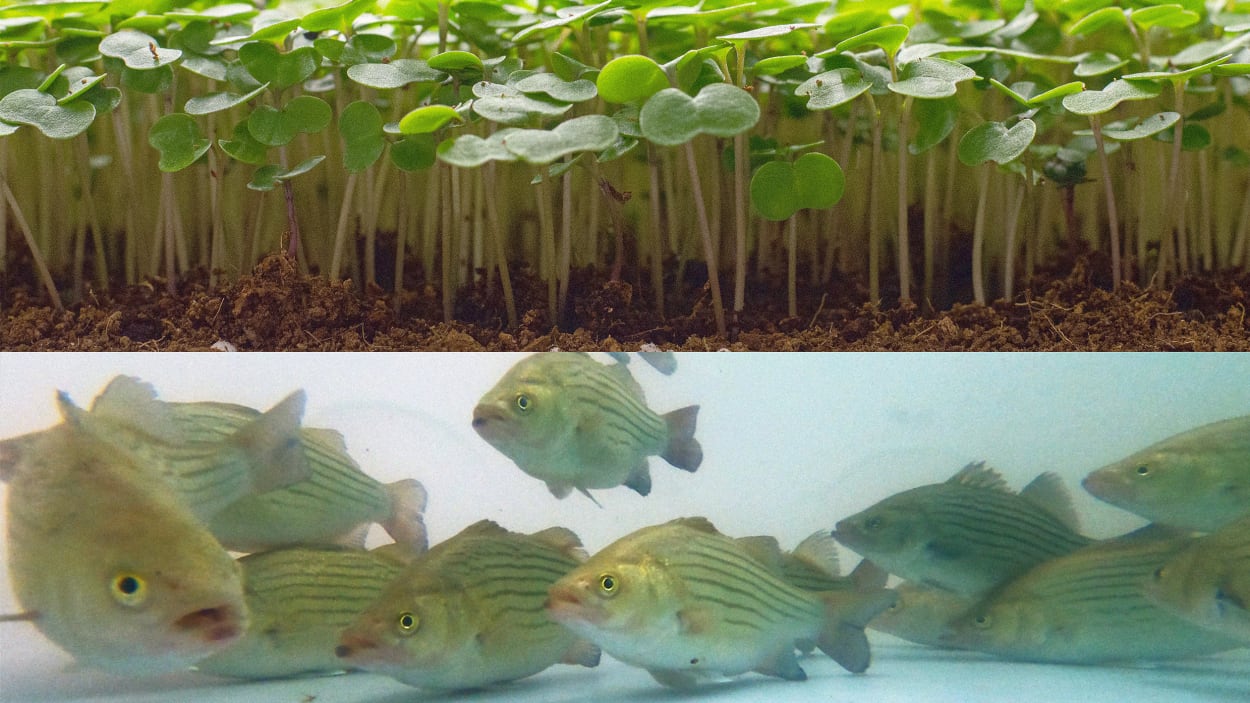The world’s largest vertical farm will have a secret ingredient: fish
Fish fertilize the plants—and then become another income stream.
01-18-22
BY ADELE PETERS
Source: https://www.fastcompany.com/90713239/the-worlds-largest-vertical-farm-will-have-a-secret-ingredient-fish
A sprawling new building that will soon be constructed in Luzerne County, Pennsylvania—at 250,000 square feet, roughly the size of two entire city blocks in Manhattan—will be the largest vertical farm in the world when it’s completed in 2023. Inside, though, you won’t find just vegetables: Tanks full of fish will sit near vertical stacks of trays filled with certified organic microgreens.
In the vertical farming industry, which is raising billions from investors, many startups grow greens like spinach or bok choy inside carefully-managed indoor spaces, and then selling the fresh produce to local consumers. But Brooklyn-based company Upward Farms is unusual in its use of fish, a version of a centuries-old practice called aquaponics. While others use synthetic fertilizer in their growing systems, the company uses fish waste that it filters out of tanks to provide nutrients to its plants. Both the fish and greens are then sold for food.

“What we’re really focused on as a vertical farm, which differentiates us from peers, is the microbiome,” says Upward Farms CEO, Jason Green. In humans, the microbiome—the invisible layer of bacteria that lives in and around us—helps maintain health. The same is true in plants. “What’s well understood is that the microbiome of plants has a huge influence on the outcomes of those plants, from the perspective of quality, nutrition, yield,” Green says. Using nutrients from fish, instead of synthetic fertilizer, helps build that healthy environment for the plants.

Green says that the company, which already has a smaller facility in Brooklyn, is seeing yields two times above the industry average, without doing the intense optimization of growing factors—from humidity and temperature to the color of the light in the room—that many vertical farms use to help plants grow fastest. That can help reduce cost, which is valuable in an industry that’s trying to compete with cheap produce grown in fields.
While many indoor farming companies rely on artificial intelligence to track and predict the best conditions for plants, Green says that the microbes from the fish provide an added layer of ecological intelligence. “No matter how good you get as a grower, plants are always going to be genetically different—unless every seed you’re using is a clone, which it’s not, there are going to be small differences,” he says. “And as a result of that, you’re going to get different outcomes. But there’s a communication layer that’s been built in by millions of years of evolution between plants and microbes, where plants can say, ‘Hey, I’m stressed in this way, my environment is imperfect in this way, can you help me?’ and plants recruit microbes to their service. All of those mechanics are really well established in the scientific literature.”
As with other indoor farms, the company uses far less water, and far less land, to grow greens than a typical farm growing outside. And because most greens are grown in California or Arizona, the new facility in Pennsylvania will help get greens to consumers in the Northeast much faster, keeping the food fresher. The massive size of the new farm, along with the aquaponic system, will help the industry grow. “Vertical farming is a market with tremendous promise, [but] to have impact requires scale,” Green says. “And so in our perspective, bringing vertical farming to scale that it can become a rival or an alternative to field parity is of critical importance.”
Now accepting applications for Most Innovative Companies.
Apply by October 6 for your chance to be featured!
